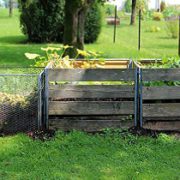New SYSTEMIC article on bio-based mineral fertilisers from agricultural waste
The SYSTEMIC project has published an open-access article on ‘Production and performance of bio-based mineral fertilisers from agricultural waste using ammonia (stripping-)scrubbing technology’ in the Waste Management Journal (April 2019).
Read the abstract below.
Development and optimisation of nutrient-recovery technologies for agricultural waste is on the rise, however their full-scale adoption is hindered by complex legal aspects resulting from lack of science-based knowledge on characterisation and fertiliser performance of recovered end-products.
Ammonium sulfate (AS) and ammonium nitrate (AN), end-products of (stripping-)scrubbing technology, are currently listed by the European Commission as high-priority products with the potential of replacing synthetic N fertilisers. Their legal acceptance will be highly dependent on a critical mass of scientific evidence.
The study describes four different (stripping-)scrubbing pathways to recover ammonia with the aims of:
- assessing product characteristics of ammonium nitrate (AN) and ammonium sulfate (AS) produced from different installations;
- evaluating fertiliser performance of recovered end-products in greenhouse (Lactuca sativa L.) and full field (Zea mays L.) scale settings; and
- comparing the observed performances with other published studies.
Results have indicated that the recovered products might have a different legal status, as either mineral N fertiliser or yet as animal manure, depending on the used (stripping-)scrubbing process pathway. Nevertheless, no significant differences in respect to product characterisation and fertiliser performance of AN and AS have been identified in this study as compared to the conventional use of synthetic N fertilisers.
This indicates that recovered AS and AN are valuable N sources and therefore might be used as N fertilisers in crop cultivation.



